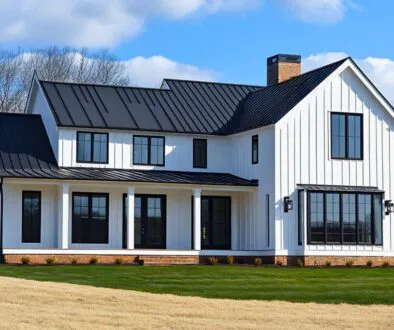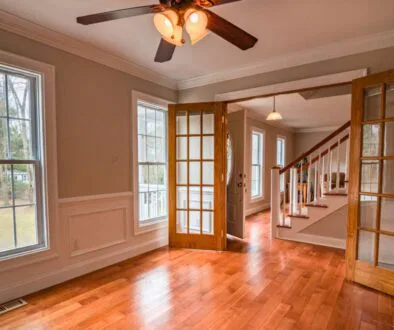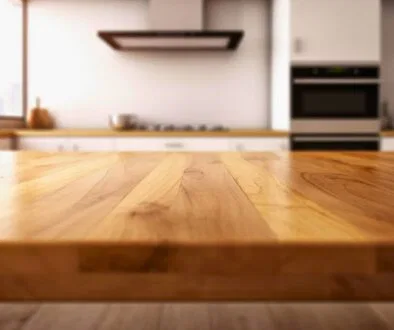Standard Ceiling Height: A Key Factor In Home Design
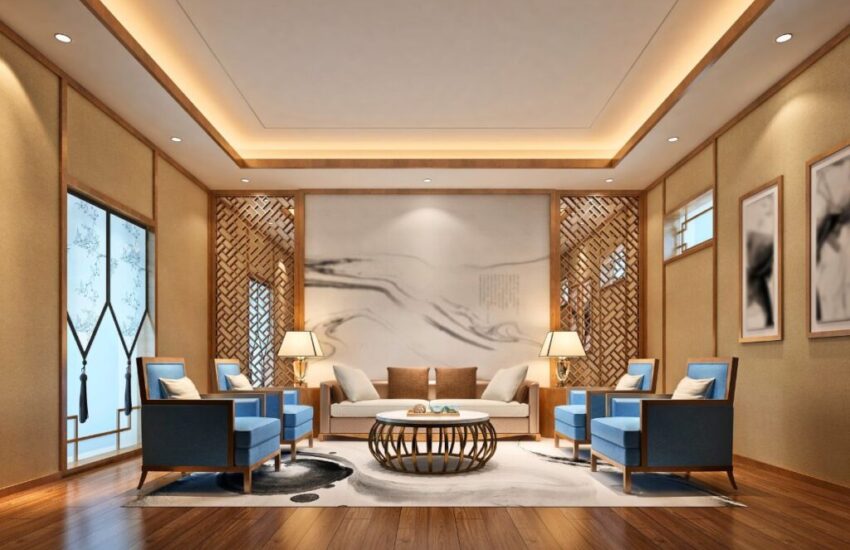
Published April 8, 2025
Did you know the standard ceiling height in your home could affect more than just its looks? Ceiling height affects how a space feels and functions, as well as construction costs. Yet, most people overlook it until it’s too late.
In this article, we’ll explore ceiling basics, with a focus on the standard ceiling height. We’ll also examine its historical evolution, significance in interior design, practical implications, and possibilities for modification.
What Is The Standard Ceiling Height?
The standard ceiling height in modern residential homes is typically 8 or 9 feet, depending on when the home was built. 8-foot ceilings have been the standard for decades due to the practicality of standard board lengths and the lower material costs.
In newer homes, 9-foot ceilings are becoming more popular. They balance cost, aesthetics, and comfort. Custom-built homes often have ceilings 10 feet or higher. These taller ceilings create a spacious and elegant feel.
The 9-foot ceiling standard is a relatively recent development. For much of the 20th century, 8-foot ceilings were the norm, a trend driven by post-World War II construction practices. The ceiling height is not always fixed. Homeowners can customize it during renovations or new construction to fit their needs and preferences.
The Evolution Of Ceiling Heights
The height of ceilings has steadily increased over time, shaped by technological advancements, design trends, and changing societal preferences.
Historical Ceiling Heights
In the 1700s, homes in New England often had ceilings as low as 7 feet. This practical design helped heat smaller spaces with a central fireplace, which was essential at the time. As heating technology improved, ceilings rose, creating a greater sense of space and light.
From 10-Foot Grandeur To 9-Foot Practicality
Before the 20th century, wealthy homes often featured grand 10-foot ceilings as a symbol of luxury. After the war, mass housing popularized 8-foot ceilings for their affordability and efficiency. By the 1990s and 2000s, 9-foot ceilings gained popularity, balancing elegance and cost-effectiveness.
Impact Of Construction Materials And Techniques
Construction materials and practices influence the evolution of ceiling heights. Standard drywall panels are usually 8-foot long, matching homes with 8-foot ceilings. While visually striking, taller ceilings require more materials, labor, and cost, making them a premium feature in residential design.
Over the centuries, ceiling heights have evolved from functional designs to architectural expressions, reflecting technological progress and aesthetics.
The Importance Of Ceiling Height In Interior Design
The height of a ceiling dramatically influences the aesthetics, atmosphere, and practicality of a space. Here’s how it shapes design choices:
Aesthetics And Ambiance
Ceiling height plays a key role in shaping a room’s character. High ceilings exude openness and elegance, giving spaces a grand, luxurious feel. In contrast, low ceilings foster a warm and intimate ambiance, though they may lack the airy appeal of taller spaces. Striking the right balance is crucial. Excessively high ceilings can feel cold and impersonal, while too low ceilings risk creating a cramped and restrictive environment.
Furniture Selection
Ceiling height plays a crucial role in choosing the right furniture. High ceilings are perfect for larger pieces like bookcases and wardrobes. They add grandeur without overwhelming the space. Lower ceilings work better with sleek, compact furniture. This keeps the room balanced and prevents it from feeling cramped.
Lighting Design
Effective lighting design relies heavily on ceiling height. High ceilings work well with dramatic fixtures like chandeliers or oversized pendant lights, which emphasize and enhance the vertical space. Lower ceilings are better suited for recessed or flush-mounted lighting, which keeps the space open while providing plenty of light.
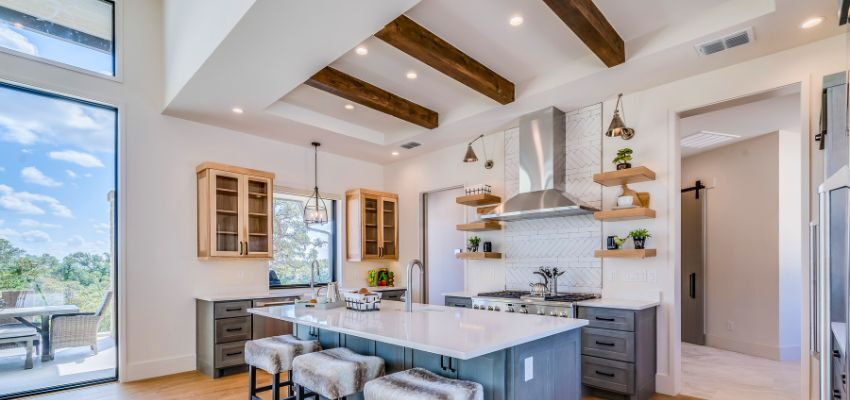
Practical Considerations
Ceiling height isn’t just an aesthetic choice—it also affects construction costs, energy efficiency, and compliance with regulations. Here’s what to keep in mind:
Cost Considerations
Standard ceiling heights of 8 or 9 feet are generally the most cost-efficient option. Lower ceilings often involve cutting materials to fit, while higher ceilings require additional materials, which can increase construction costs.
Energy Efficiency And Climate Control
High ceilings create a sense of spaciousness but require more energy for heating and cooling. The larger air volume increases energy demands. Older homes with 7-foot ceilings feel smaller but are more energy-efficient. To make tall spaces sustainable, upgrade to energy-efficient HVAC systems and improve insulation to minimize heat loss or gain.
Building Codes And Regulations
Building codes set minimum ceiling height standards. Habitable spaces are usually 7 feet under the 2021 International Residential Code (IRC). Bathrooms, laundry, and toilet rooms can have ceilings as low as 6 feet 8 inches. Always check local building codes before changing ceiling heights. This is essential for renovations or new construction.
Modifying Ceiling Heights
Changing ceiling heights can dramatically transform a home’s look and feel but comes with unique challenges and considerations. Here’s what you need to know:
- Raising your ceiling. Raising a ceiling involves structural changes. The process is more straightforward if you have an attic since the roof can be modified. Homes without attics may require more costly roof work. An average of $50 per square foot is a significant investment but can significantly enhance your home’s space and appeal.
- Lowering ceilings. Lowering a ceiling is simpler and cheaper than raising one, costing about $11 per square foot. It usually involves adding a new layer beneath the existing ceiling. To ensure safety and comfort, make sure the lowered ceiling complies with building code height requirements.
- Structural integrity matters. Maintaining structural integrity is essential when changing ceiling heights—raising or lowering. Support beams and joists must be properly installed to ensure stability and professional evaluations must be done to meet safety standards. Consulting a structural engineer is strongly recommended for any major ceiling modifications.
Frequently Asked Questions
Can I raise my ceiling?
Yes, but it can be a complicated and expensive process, depending on the structure of your home.
How much does it cost to raise a ceiling?
On average, raising a ceiling costs around $50 per square foot. However, if structural changes are required, the price can climb significantly.
Can I lower my ceiling?
Lowering a ceiling is typically much simpler and more cost-effective than raising one.
How much does it cost to lower a ceiling?
Lowering a ceiling usually costs approximately $11 per square foot, making it more cost-effective.
How low can I lower my ceiling?
Most building codes set the minimum ceiling height at 7 feet for living spaces and 6 feet 8 inches for bathrooms and similar areas. However, local regulations may vary, so it’s always best to check.
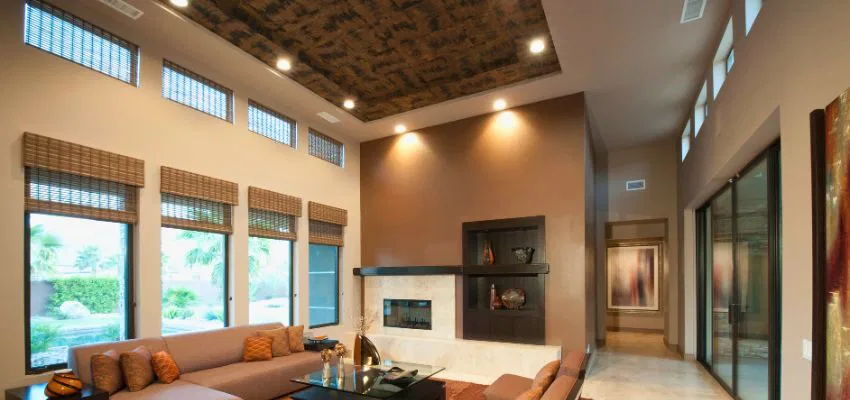
Ceiling Height Decoded: A Key To Smarter, Stylish Living
The ceiling height is more than a number. It reflects history, personal style, and practicality. Whether designing a home or remodeling, ceiling height plays a key role. Its evolution over time has shaped how we design interiors. Standard ceiling height has a significant impact on the spaces we live in.
Looking to elevate your space with reclaimed wood accents that pair perfectly with any ceiling height? Explore unique, character-rich options at Vintage & Specialty Wood.
Hire The Timber Experts For Your Next Project
Vintage & Specialty Wood should be your source of the highest quality timbers from around the world. When it comes to fabricating and installing reclaimed wood or specialty wood products in your home, we don’t cut corners. We offer many reclaimed wood and specialty wood products such as Douglas Fir, white oak, and much more. We also offer timber framing and wood flooring services as well. Contact our team today to speak to a timber expert about what Vintage & Specialty Wood can do for you.

This Blog Is Fact Checked
This content has undergone meticulous fact-checking by our team of internal experts. Gain a deeper understanding of the high editorial standards we uphold on our website here.

About The Author
Experience, exploration, and knowledge are the hallmarks of writer Rei Bayucca. Her dedication to crafting articles that both inspire and educate will leave you thinking long after you’ve finished reading.

